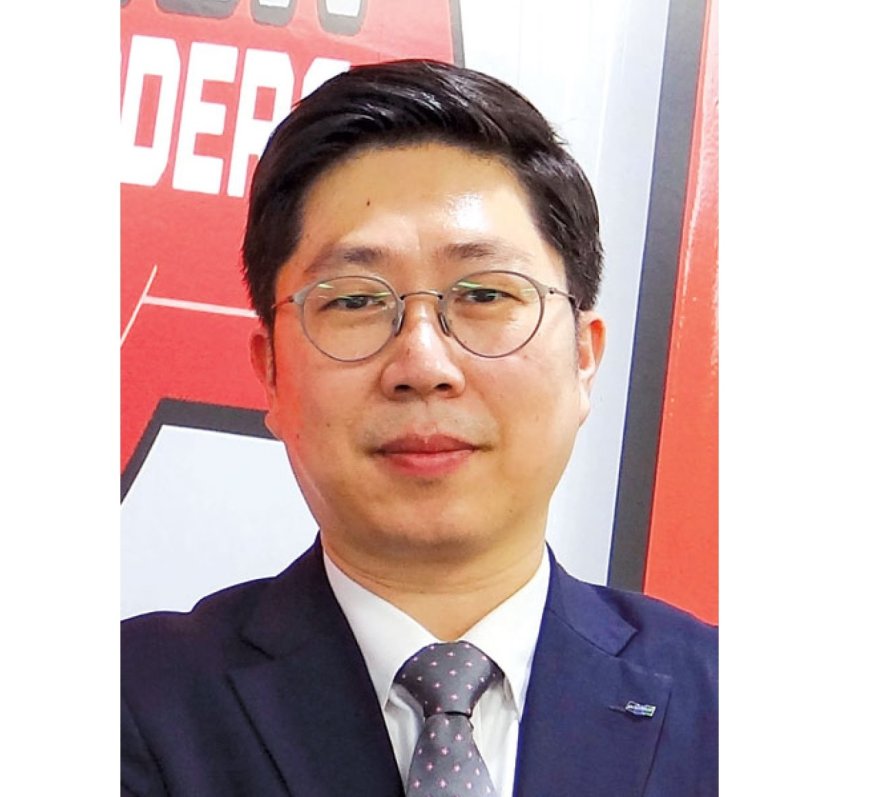Doosan Bobcat established the Chennai plant as the global hub for supplying Bobcat Backhoe Loaders
With the growth in infrastructure development in evidence, we are seeing a positive trend in the overall Indian Constriction Equipment Industry.

How do you look at the present market conditions for your products?
With the growth in infrastructure development in evidence, we are seeing a positive trend in the overall Indian Constriction Equipment Industry. And with markets now in the rebound phase, besides anticipated growth in coming years, the infrastructure sector is gearing up with projects across all sectors. The steady growth in demand would show the road to recovery fuelled by government initiatives.
Can you brief us on your export market?
Doosan Bobcat established the Chennai plant as the global hub for supplying Bobcat Backhoe Loaders. Most of the Global OEM suppliers are present with manufacturing facilities in India, having extensive supply chain networks. Through this, we have evaluated the Indian supplier base for our global models and have achieved 100% localization with high quality at the optimal cost. Besides the prevailing inflation and an increase in the cost of raw materials in the export markets, Bobcat India with its localization efforts is able to meet the demands of these markets.
Customers are becoming focused on green initiatives and savings in fuel costs and leaving a lesser carbon footprint. Could you please help us understand the green initiatives on product development undertaken by your organization?
With the latest emission norms and the mandate to shift to CEV Stage IV Engines, the market need for fuel-efficient machines play a crucial factor besides the demand for improved performance, and a good aftermarket network. One of the focus areas is the technological enhancement of electronic engines through CEV Stage IV Norms that ensures improvement in fuel efficiency, increased uptime and productivity, and lower operating costs. Similarly, improvement in performance through advanced hydraulics, ergonomically designed operator cabins for superior experience resulting in long working hours, the telematics solutions like remote monitoring of the equipment to reduce downtime are critical evaluations to the overall productiveness and profitability. Furthermore, while Bobcat India is getting ready to adopt the CEV-Stage V emission norms, it will pave the way to meet the demands of the developed markets which would upsurge exports from India.
What are your after-sales initiatives for your range of products?
Doosan Bobcat India demonstrates its commitment by ensuring faster response and delivery times to all our customers by bringing parts closer to the end-user job sites. Bobcat offers a 24-hour service guarantee which would enable quicker order-to-delivery times with the highest level of service for aftermarket parts. This would also improve the availability and delivery of Bobcat parts and attachments throughout the India Region. The outstanding support from dealers and improved parts availability enable faster service for our valued Bobcat customers.
What are the plans for the electrification of the offering by your organization? What typical challenges do you think the industry would face if we had to move to complete electric offerings for the customers?
More and more equipment owners and companies are making strides toward sustainability and electrification, particularly in the construction equipment segment. Globally, we are the first to introduce a fully electric concept in a compact track loader. In India, we are exploring applications and opportunities to introduce electric equipment in consideration of customers’ requirements. There are some major barriers to the adoption of electrification in the CE segment. Some of the challenges are infrastructure readiness, such as the availability of charging stations, service stations, battery replacement costs, and so on. Besides downtime from charging, the adoption of battery swapping and high-power charging solutions for heavy machinery equipment are also major challenges due to the remoteness of work sites and limited or unreliable access to electricity. Though currently in the nascent stage, we have plans to come up with an All-Electric Compact Excavator and similar compact equipment in the future. Bobcat ensures the electric variants provide the same power and performance as diesel-powered models, but with considerably lower daily operating costs, zero emissions, and minimal maintenance.
With the heavy increase in the expenditure for infrastructure development in this country, how do you think you are going to utilize the opportunity? Are you planning to add more products in the future?
With markets on track, the CE industry is now gearing up to meet the demands, such as the Union budget’s focus on encouraging the infrastructure sector like the multi-modal transportation through Gati Shakti Plan and National Infrastructure Pipeline. This is a great opportunity for the OEMs to catch up with the upcoming projects by strengthening their channel network and ramping up production to meet up market demands. Doosan Bobcat established the Chennai plant as the global hub for supplying Bobcat Backhoe Loaders to cater to the domestic and export market. With most of our global suppliers having local manufacturing facilities, we have the bandwidth to introduce more variants in the Backhoe Loader line-up, along with Skid Steer Loaders and Compact Excavators.
Hits: 5








